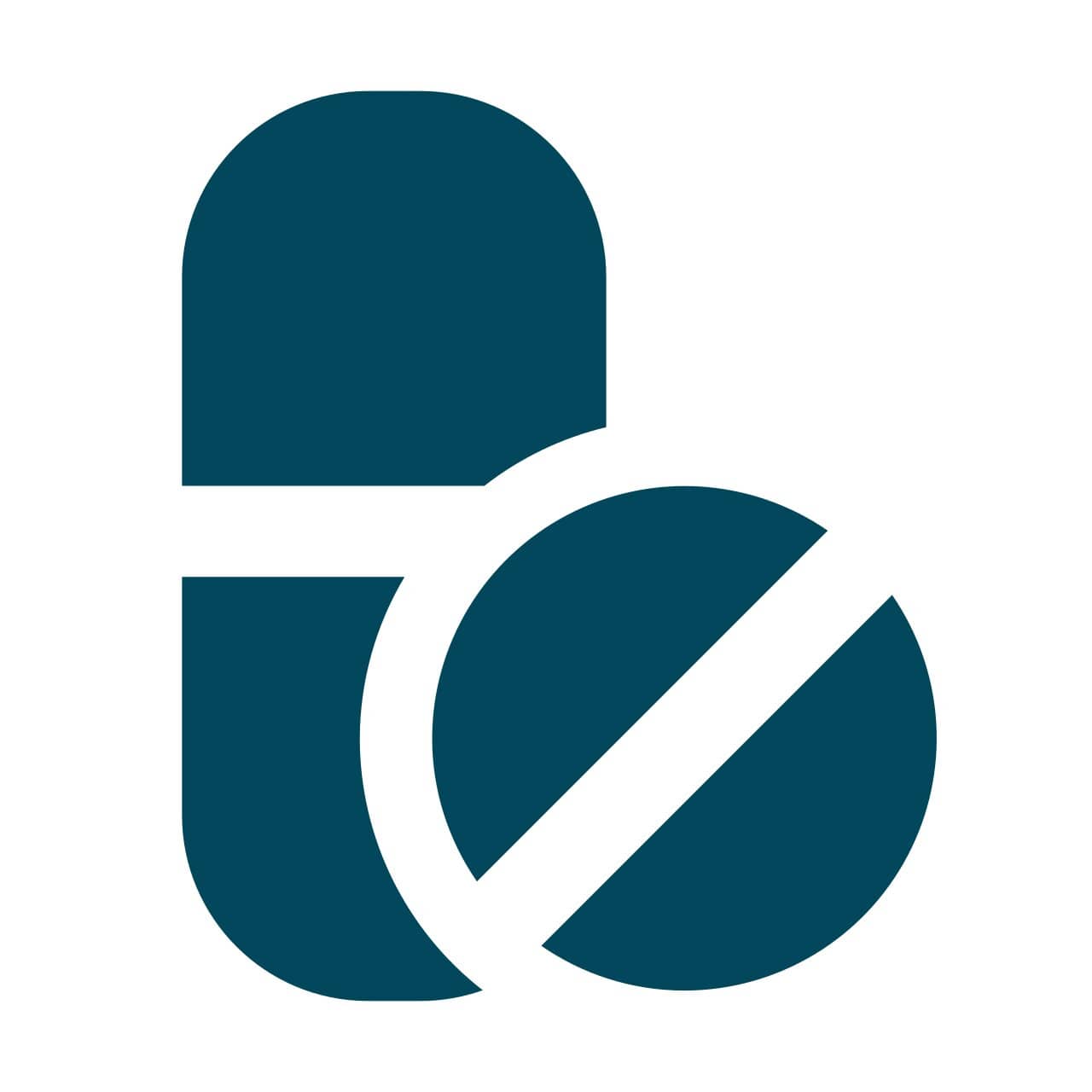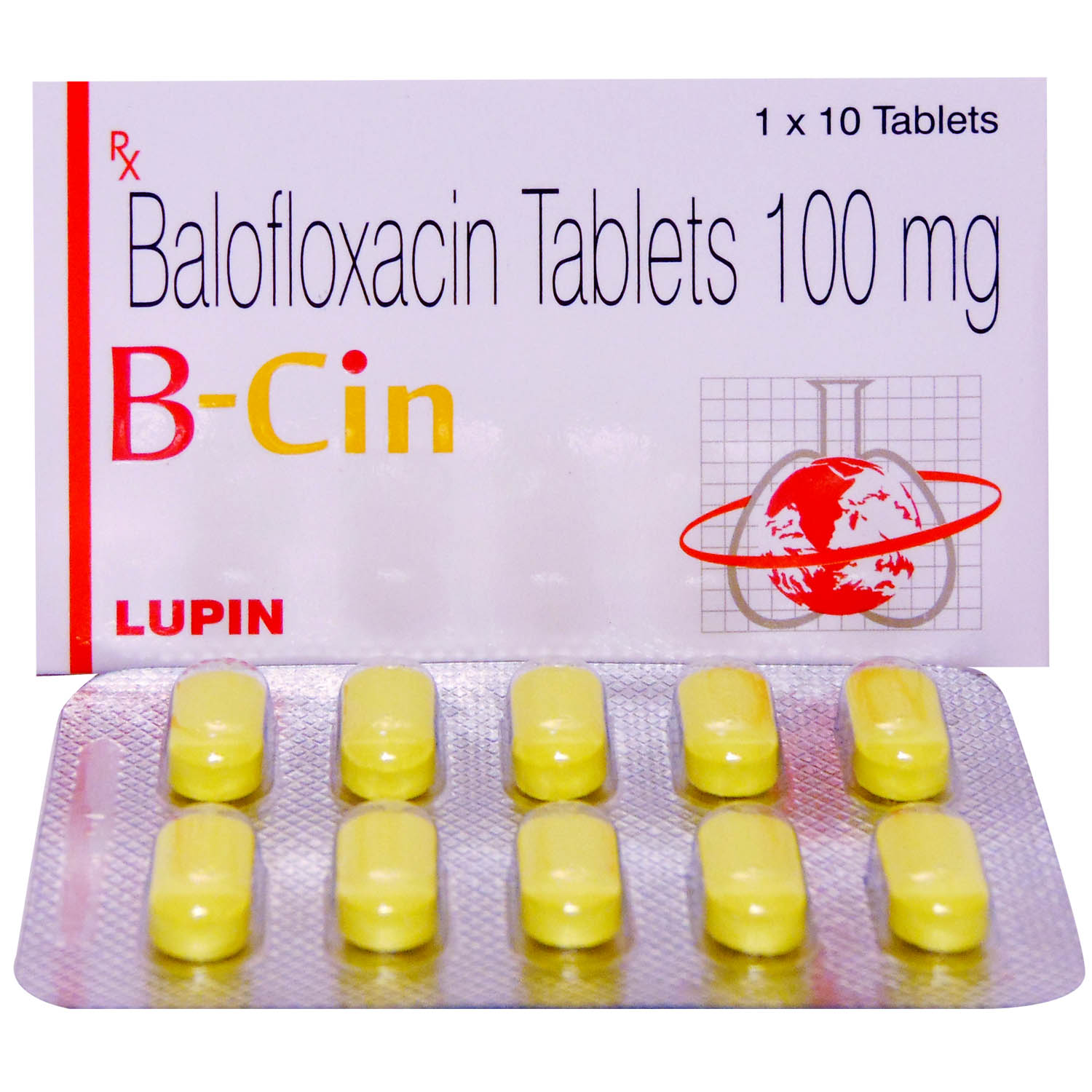Balofloxacin
About Balofloxacin
Balofloxacin belongs to a class of drugs known as 'antibiotics' used in the treatment of bacterial infections. It is also used in infections of the urinary tract, tonsils, sinus, nose, throat, female genital organs, skin and soft tissues and lungs (pneumonia) Balofloxacin does not treat infections caused by virus-like flu or a common cold.
Balofloxacin contains an antibiotic medicine, Balofloxacin, used to treat bacterial infections. The bactericidal action of Balofloxacin results from interference with the enzyme DNA gyrase, which is needed for the synthesis of bacterial DNA. Balofloxacin is efficacious against Gram-negative bacteria. It also has enhanced activity against Gram-positive bacteria, including MRSA and Streptococcus pneumoniae.
Take Balofloxacin as prescribed by your doctor. You are advised to take Balofloxacin for as long as your doctor has prescribed it for you, depending upon your medical condition. You may experience vomiting, headache, dizziness, stomach pain, nausea, diarrhoea and abnormal liver function tests in some cases. However, if the side effects are persistent, reach out to your doctor. If you experience any allergic reaction symptoms such as rashes, itching, swelling, shortness of breath, etc., you should immediately contact a doctor.
Do not take Balofloxacin if you are allergic or have had a severe reaction to Balofloxacin. Taking Balofloxacin may increase the chances of developing tendinitis or having a tendon rupture. Taking Balofloxacin may worsen muscle weakness in people with myasthenia gravis (muscle weakness disorder) and cause severe difficulty breathing or death. Dairy products should be avoided along with Balofloxacin. And also, exposure to sunlight should be avoided while taking Balofloxacin as it may cause increased phototoxicity or photosensitivity.
Uses of Balofloxacin
Medicinal Benefits
Balofloxacin belongs to a class of drugs known as 'antibiotics' containing Balofloxacin, which is used in the treatment of bacterial infections. It is also used in infections of the urinary tract, tonsils, sinus, nose, throat, female genital organs, skin and soft tissues and lungs (pneumonia) Balofloxacin does not treat infections caused by virus-like, like flu or a common cold.
Directions for Use
- Balofloxacin can be taken with or without food, but avoid dairy products (e.g., milk, cheese, curd) as they reduce absorption and efficacy.
- Follow your doctor’s recommendations on the dosage and timing of this medication to achieve optimal results.
- Swallow it as a whole with a glass of water.
- Do not crush, chew, or break it.
Storage
Side Effects of Balofloxacin
- Vomiting
- Headache
- Dizziness
- Stomach pain
- Nausea
- Diarrhea
- Abnormal liver function tests
Drug Warnings
Do not take Balofloxacin if you are allergic or have had a severe reaction to Balofloxacin. Taking Balofloxacin may increase the chances of developing tendinitis (swelling of a fibrous tissue that connects a bone to a muscle) or having a tendon rupture (tearing of a fibrous tissue that connects a bone to a muscle). Inform your doctor if you have or have ever had a kidney or liver disease, heart or lung transplant, seizures (fits), epilepsy or if you participate in regular physical activity. Taking Balofloxacin may worsen muscle weakness in people with myasthenia gravis (a nervous system disorder that causes muscle weakness) and cause severe difficulty breathing or death. Dairy products should be avoided along with Balofloxacin. And also, exposure to sunlight should be avoided while taking Balofloxacin as it may cause increased phototoxicity or photosensitivity. Patients with epilepsy and irregular heartbeat (especially a condition known as QT prolongation) should tell their doctor before taking Balofloxacin.
Drug Interactions
Drug-Disease Interaction: Balofloxacin is known to interact in patients with kidney or liver disease, heart, or lung transplant, seizures, epilepsy, hypertension (high blood pressure), diabetes, myasthenia gravis (a muscle disorder), low level of potassium or magnesium in the blood.
Drug-Food Interaction: Balofloxacin interacts with alcohol and antacids containing aluminium and magnesium. Also, it is known to interact with dairy products.
Drug-drug interaction: Balofloxacin is known to interact with corticosteroids (prednisone, methylprednisolone), pain killers (ibuprofen, naproxen, aspirin, diclofenac, celecoxib), antidiabetic medicines (chlorpropamide, glimepiride, glipizide, glyburide, tolazamide, tolbutamide).
Drug-Drug Interactions Checker List:
Safety Advice

Alcohol
cautionAvoid or limit consumption of alcohol while on treatment with Balofloxacin.

Pregnancy
unsafeBalofloxacin is a pregnancy Category C medicine. If you are pregnant, consult your doctor before taking Balofloxacin. Your doctor may weigh the benefits and the risks before prescribing this medicine.

Breast Feeding
cautionBalofloxacin is excreted in human milk and may harm your infant. Hence, please consult your doctor before taking Balofloxacin if you are breastfeeding.

Driving
cautionBalofloxacin can affect alertness and coordination. So, operating machinery which requires concentration should be avoided.

Liver
cautionBalofloxacin to be taken with caution, especially if you have a history of liver diseases. Your doctor may adjust the dose if there are symptoms of nausea, vomiting, loss of appetite, dark-coloured urine or yellowing of skin/eye.

Kidney
cautionBalofloxacin to be taken with caution, especially if you have a history of kidney diseases. Your doctor may adjust the dose based on your condition.

Children
cautionThe safety and efficacy of Balofloxacin are not studied in children below the age of 18 years. Hence, not recommended for use.
Habit Forming
Diet & Lifestyle Advise
- Probiotics should be taken after taking the full course of Balofloxacin in order to restore some healthy bacteria in the intestines that may have been killed. Taking probiotics after antibiotic treatment can reduce the risk of antibiotic-associated diarrhea. Certain fermented foods like yoghurt, cheese, sauerkraut, kombucha, and kimchi can help restore the intestine's good bacteria.
- Include more fibre-enriched food in your diet, as it can be easily digested by gut bacteria, which helps stimulate their growth. Thus, fibre-rich foods may help restore healthy gut bacteria after antibiotics. Whole grains like whole-grain bread and brown rice should be included in your diet. Make sure you drink plenty of water or other fluids every day while you are taking Balofloxacin.
- Avoid alcohol, soda, coffee, tea and artificial sweeteners as they may cause bladder irritation.
- Drink plenty of water to flush out the bacteria.
- Avoid spicy foods and citrus fruits (lemons, oranges, grapefruits) as they may irritate the bladder.
- Eat antioxidant-rich foods such as blueberries, cranberries, tomatoes, spinach, broccoli and plain greek yoghurt.
Special Advise
- Regularly monitor your liver enzymes while taking Balofloxacin.
- Please consult a doctor if the infection persists or worsens after 1 week of using Balofloxacin.
- If you experience any signs of liver damage like yellowing of the eye, skin, or dark urine, immediately stop taking Balofloxacin and contact a doctor.
Patients Concern
Disease/Condition Glossary
Bacterial infection: It is a condition in which harmful bacteria grow in the body and cause infection. It can target any part of the body and multiply very quickly. Bacteria come in three basic shapes, namely spherical, rod or spiral-shaped. Bacteria may be gram-positive (have thick cell walls) or gram-negative (do not have cell walls). Appropriate tests are done to identify bacterial strains, and based on the results, proper medication is prescribed. Some common symptoms of bacterial infection include cough, fever and tiredness.
FAQs
Balofloxacin is used to treat bacterial infections of the urinary tract, tonsils, sinus, nose, throat, female genital organs, skin, soft tissues and lungs (pneumonia).
Balofloxacin contains Balofloxacin, primarily used to treat or prevent certain infections caused by bacteria. The bactericidal action of Balofloxacin results from interference with the enzyme DNA gyrase, which is needed for the synthesis of bacterial DNA. Balofloxacin is efficacious against Gram-negative bacteria. It also has enhanced activity against Gram-positive bacteria, including MRSA and Streptococcus pneumoniae.
A common side effect of Balofloxacin is diarrhea, but you should complete your course. If diarrhea persists and you observe blood in your stools, please visit your doctor.
Balofloxacin makes your skin sensitive to sunlight, known as photosensitivity. So, prolonged exposure to sunlight or ultraviolet light should be avoided. In case of emergency, you should always wear sunscreen before going out.
No. Balofloxacin is an antibacterial medicine that acts only against bacterial infections and not against viral infections causing cough, cold and flu. You should not take Balofloxacin without prior consulting your doctor. Self-medication is dangerous and can lower the efficacy of Balofloxacin, leading to antibiotic resistance.
No, a minimum gap of 2-3 hours should be maintained between the dose of Balofloxacin and the antacid, as an antacid is known to decrease the absorption and effectiveness of Balofloxacin.
Balofloxacin is known to increase the risk of tendinitis and tendon rupture in all ages. But, the elderly are at increased risk of getting it. So, only take Balofloxacin if prescribed by a doctor in exact dose and duration.
Yes, the use of Balofloxacin is known to increase the risk of muscle damage, commonly in the ankle. It can happen to people of all ages. Please inform your doctor before taking Balofloxacin if you have any muscle pain.
No, you should not stop using Balofloxacin even if you feel better. It's important to complete the full course of treatment as prescribed by your doctor. Stopping the usage of Balofloxacin too early can lead to the infection returning or worsening, and it may also contribute to antibiotic resistance.
The common side effects of Balofloxacin are vomiting, headache, dizziness, stomach pain, nausea, diarrhoea and abnormal liver function tests in some cases. If any of these side effects persist or worsen, please consult your doctor.




